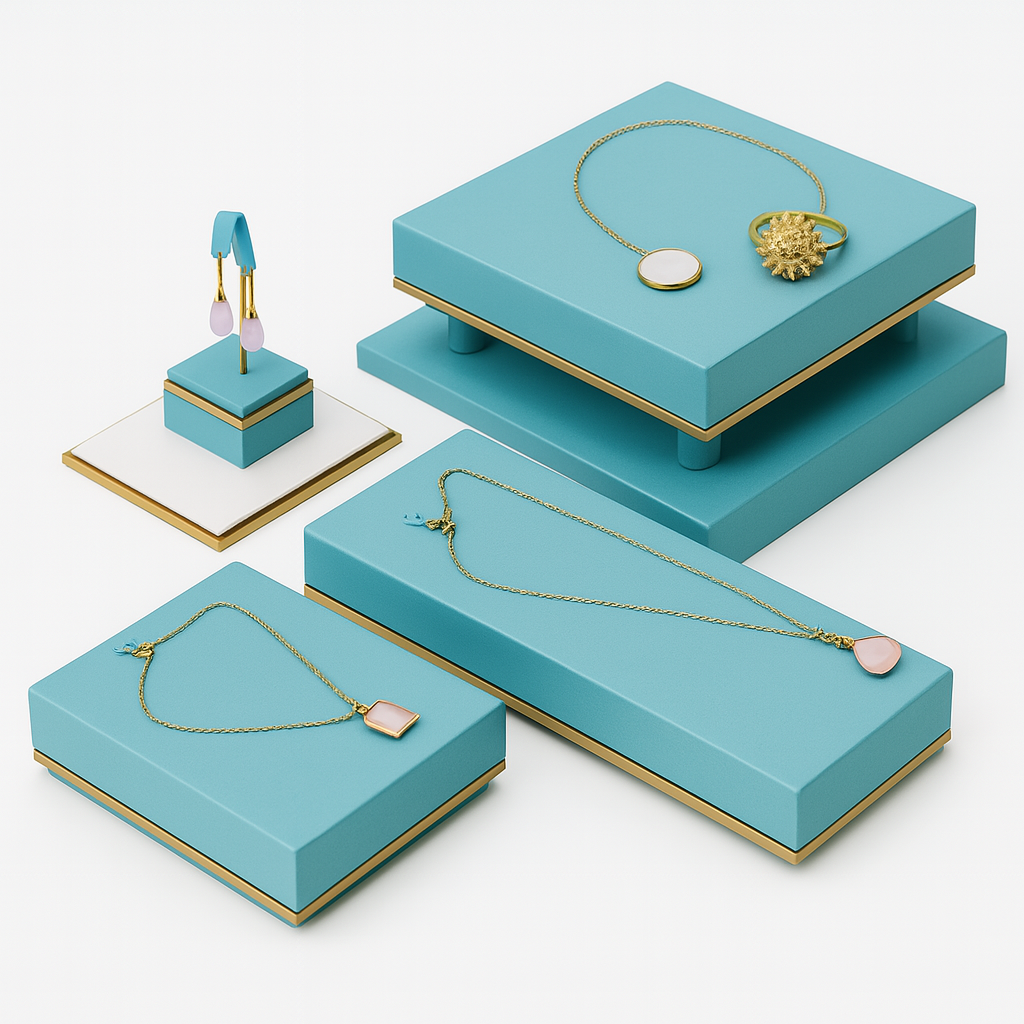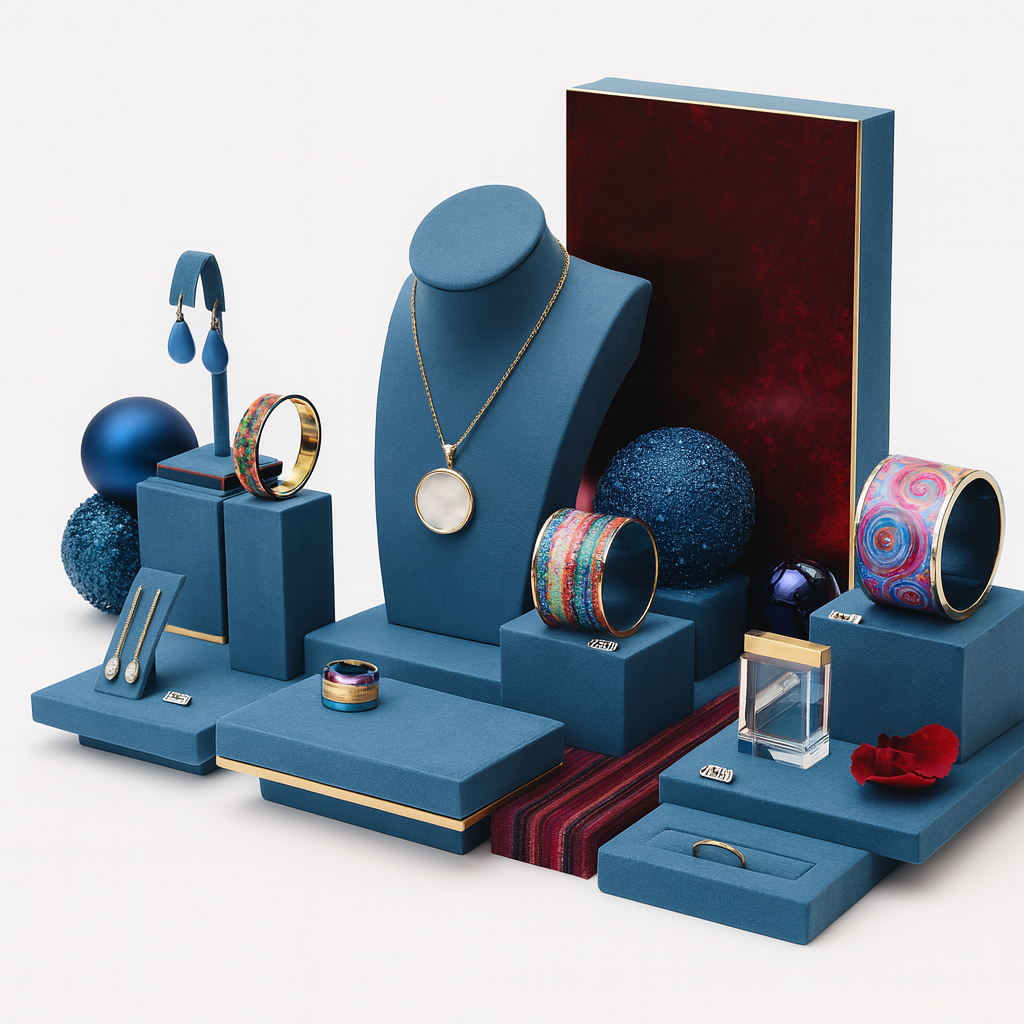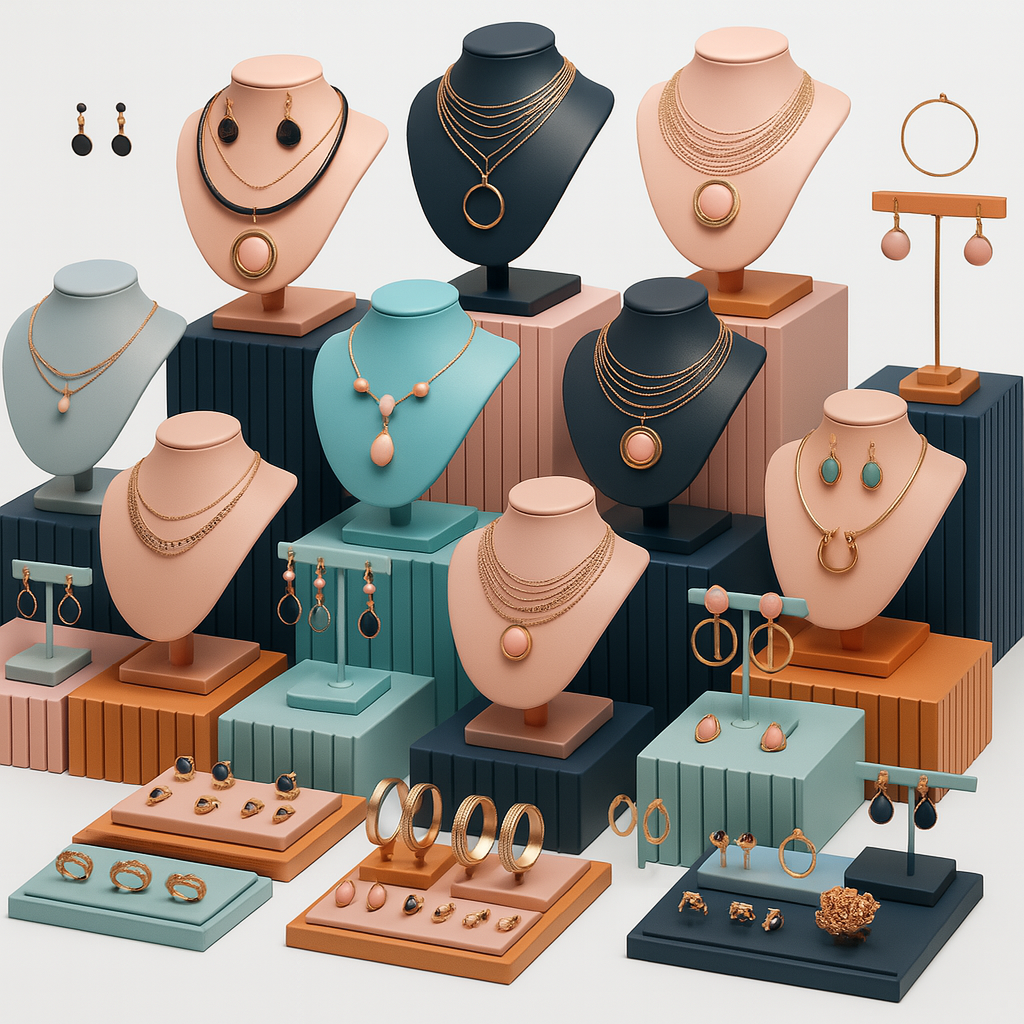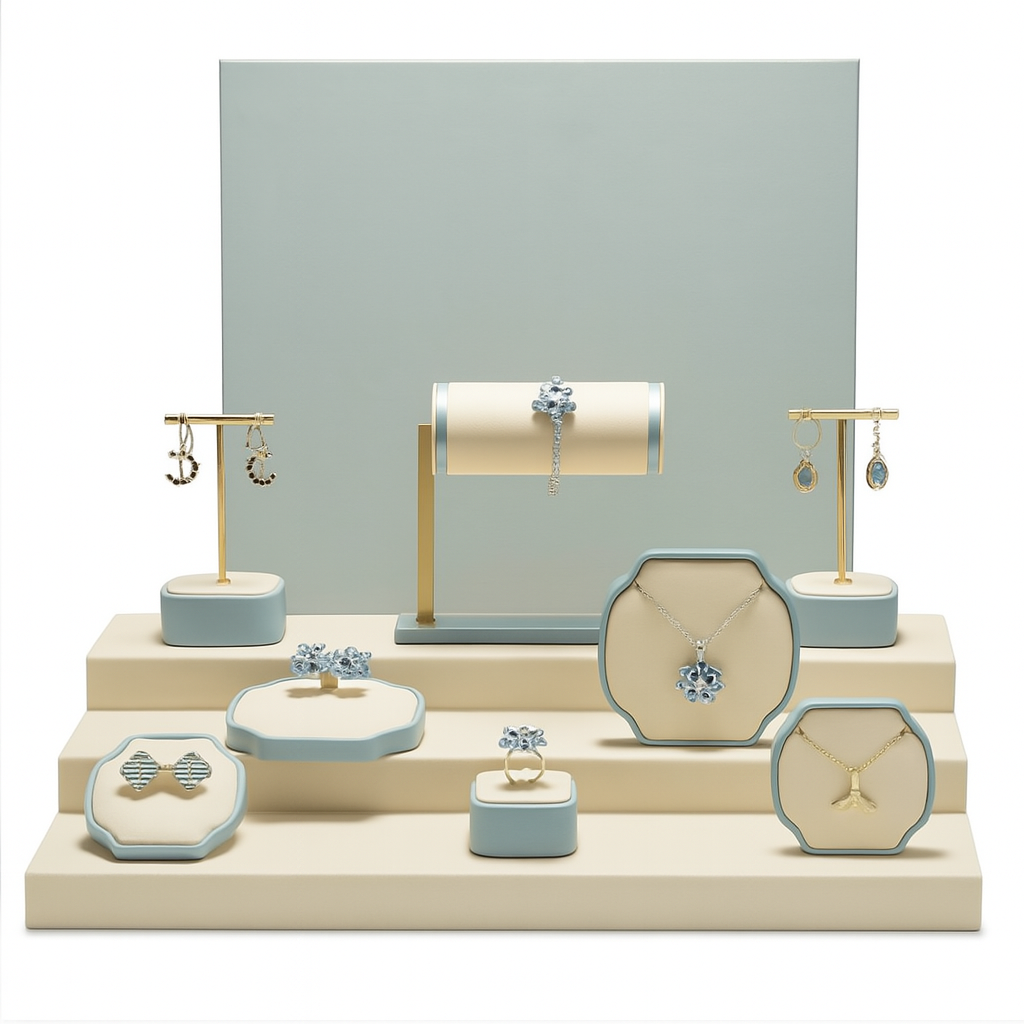For jewelry store owners, jewelry display window design is a crucial aspect. Because jewelry is relatively small and difficult to attract attention, the window display is crucial for attracting visitors. Window displays are a crucial component of any jewelry store or specialty counter. A beautiful jewelry window not only captures customers' attention but also their hearts, making window design and layout essential for any business. The design and display requirements for jewelry windows are clear themes, distinctive shapes, unique characteristics, and a rich cultural and artistic atmosphere. When designing window displays, sales staff must understand the designer's design concepts, understand the window's characteristics, and select and arrange the appropriate exhibits and props accordingly.
1.Display Structure Essentials: Components and Types of Jewelry Display Sets

Understanding the components of a jewelry display window, including the base, back panel, and other structures, as well as the differences between closed and open display windows, will lay a solid foundation for window installation.
A display window generally consists of a base, top, back panel, and side panels. Based on the completeness of these components, display windows can be categorized as follows:
1) "Closed Display Window": A display window with all of the above components is called a closed display window.
2) "Open Display Window": Not all display windows have all four components; many only have some of them.
2.Types of Jewelry Display Windows and Their Best Use Cases

This article introduces three types of jewelry window displays: front-facing, two-way, and multi-directional, to help store owners choose the right one based on their space and display needs.
Forward-facing windows: These windows are vertical walls, either single or multiple, facing the street or the customer aisle. Generally, customers only see the merchandise displayed from the front.
Two-way windows: These windows are arranged in parallel, facing each other and extending toward the store entrance. They are also located on either side of an aisle. The back panels are often made of clear glass, allowing customers to view the exhibits from both sides.
Multi-directional windows: These windows are often located in the center of the store. Both the back and side panels are made of clear glass, allowing customers to view the exhibits from multiple directions.
3.How to Select the Right Jewelry for Your Display Sets?

Exhibits are the soul of a window display. This article explains how to optimally select jewelry for display based on category, characteristics, and quantity.
The jewelry used and displayed is the star of the window display, the soul of the window. When selecting jewelry, consider a variety of factors, including variety, characteristics, quantity, and overall aesthetic.
1) Variety Selection: Characteristics and coordination with the merchandise on display.
2) Quantity Selection: Number of varieties and number of exhibits.
4.Jewelry Window Composition Tips: Contrast & Balance for Better Impact

This chapter analyzes the application techniques of balance and contrast, using differences in primary and secondary elements, size, and texture to create a strong visual effect and enhance the appeal of window displays.
Before window display, to achieve the desired promotional effect for the jewelry on display, the presentation of the exhibits must be designed and organized to create an ideal visual composition, known as composition. Common composition techniques include balance and contrast. Balance: In window displays, the number and materials of exhibits should be visually balanced and stable. This includes symmetrical and asymmetrical balance.
Contrast: Contrast, also known as comparison, is a technique that uses various methods, such as size, primary and secondary, and texture, to highlight the main exhibit from the background.
1) Size Contrast: Size contrast utilizes the contrast in volume or area to highlight the main subject.
2) Primary and secondary contrast: Primary and secondary contrast emphasizes the primary exhibit while giving more emphasis to secondary exhibits or decorative elements to highlight the main feature.
3) Texture contrast: This is a display method that displays exhibits or decorations of different textures together and uses the visual differences caused by texture to highlight the exhibits.
5、Jewelry Display Color Coordination: Match the Theme and Setting

This article introduces the core principles of window color matching, focusing on the jewelry color, display theme, and surroundings, to create a sense of luxury and an artistic atmosphere.
When choosing colors for jewelry window displays, consider the following:
1) The window color should coordinate with the colors of the jewelry on display.
2) The window color should match the display theme.
3) The window color should match the surroundings.
Post time: Aug-18-2025

.png)
.png)
.png)
.png)

.png)